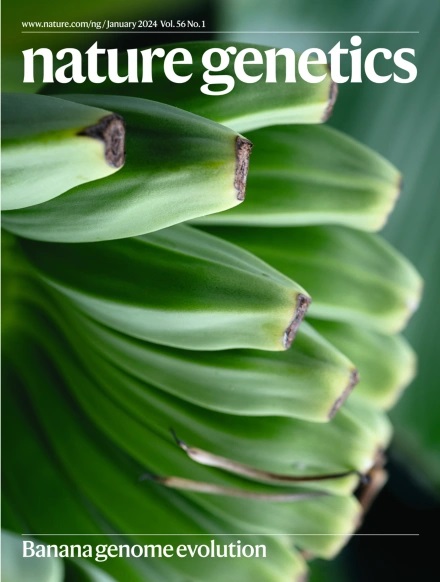Perturb-Multimodal pooled screening in intact tissues
IF 29
1区 生物学
Q1 GENETICS & HEREDITY
引用次数: 0
在完整组织中进行多模态混合筛选
基于成像的混合遗传筛选已被用于研究基因型-表型关系,并扩展到多模态测量。Saunders等人介绍了一种称为Perturb-Multimodal (Perturb-Multi)的综合方法,该方法将成像和单细胞RNA测序结合起来,在具有多模态表型读数的完整组织中进行汇总遗传筛选。Perturb-Multi受益于技术创新,以捕获rna -蛋白表型和完整的转录组,用于体内筛选。其独特的特点是对同一组织中的遗传扰动进行配对测序和成像分析,从而可以同时测量对基因表达和亚细胞形态的影响,从而为在规模和体内研究器官功能的遗传调控提供了潜力。将Perturb-Multi应用于小鼠肝脏,可以系统地观察不同基因扰动对转录状态和组织组织的影响,更重要的是,可以确定与肝细胞分区、细胞应激反应和脂肪变性相关的肝脏生理的候选遗传调控因子。Perturb-Multi为机器学习模型提供训练数据,并可扩展到其他器官,在不同生理条件下进行细胞和组织水平的功能基因组学研究。原始参考文献:Cell https://doi.org/10.1016/j.cell.2025.05.022 (2025)
本文章由计算机程序翻译,如有差异,请以英文原文为准。
求助全文
约1分钟内获得全文
求助全文
来源期刊

Nature genetics
生物-遗传学
CiteScore
43.00
自引率
2.60%
发文量
241
审稿时长
3 months
期刊介绍:
Nature Genetics publishes the very highest quality research in genetics. It encompasses genetic and functional genomic studies on human and plant traits and on other model organisms. Current emphasis is on the genetic basis for common and complex diseases and on the functional mechanism, architecture and evolution of gene networks, studied by experimental perturbation.
Integrative genetic topics comprise, but are not limited to:
-Genes in the pathology of human disease
-Molecular analysis of simple and complex genetic traits
-Cancer genetics
-Agricultural genomics
-Developmental genetics
-Regulatory variation in gene expression
-Strategies and technologies for extracting function from genomic data
-Pharmacological genomics
-Genome evolution
 求助内容:
求助内容: 应助结果提醒方式:
应助结果提醒方式:


